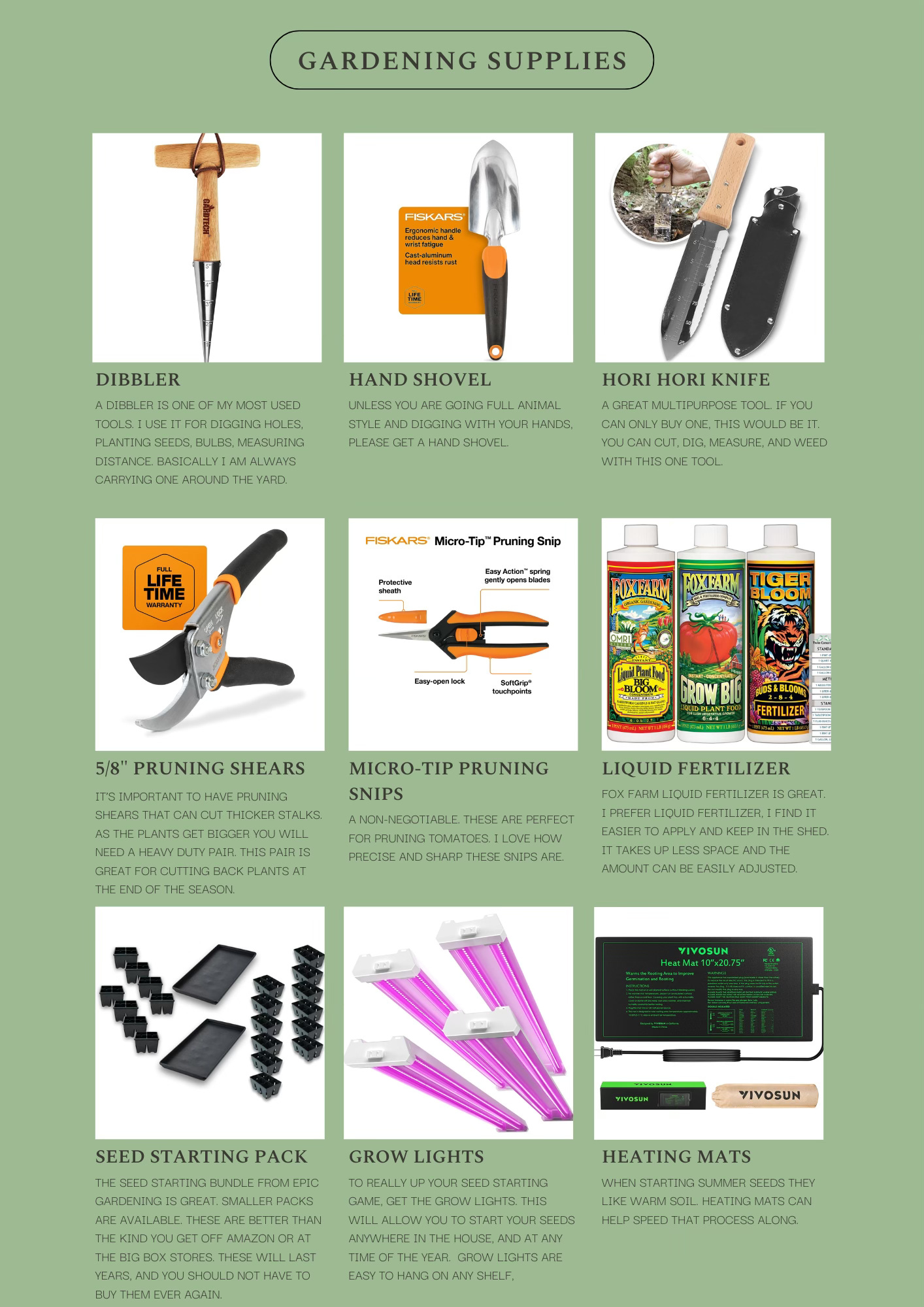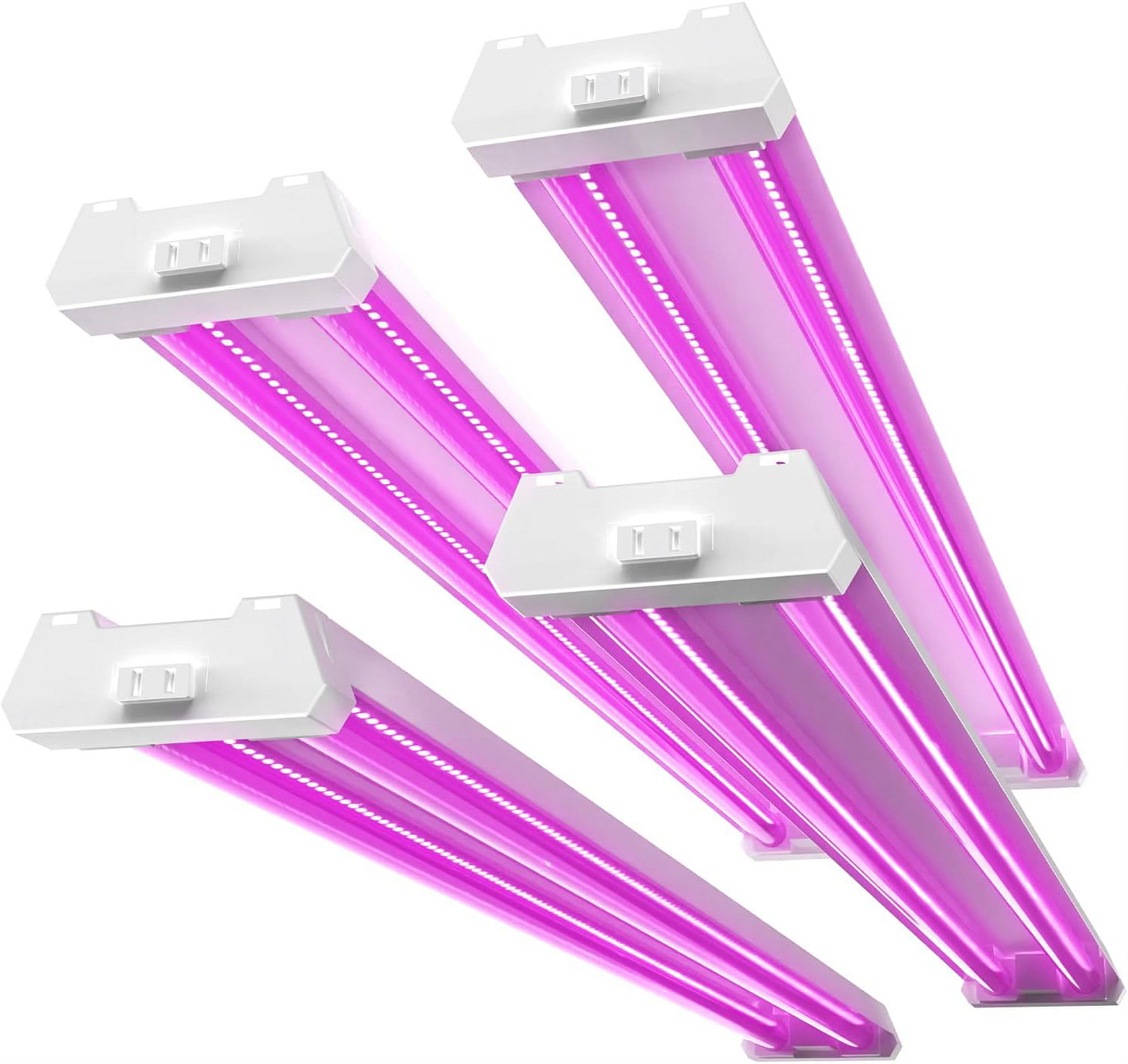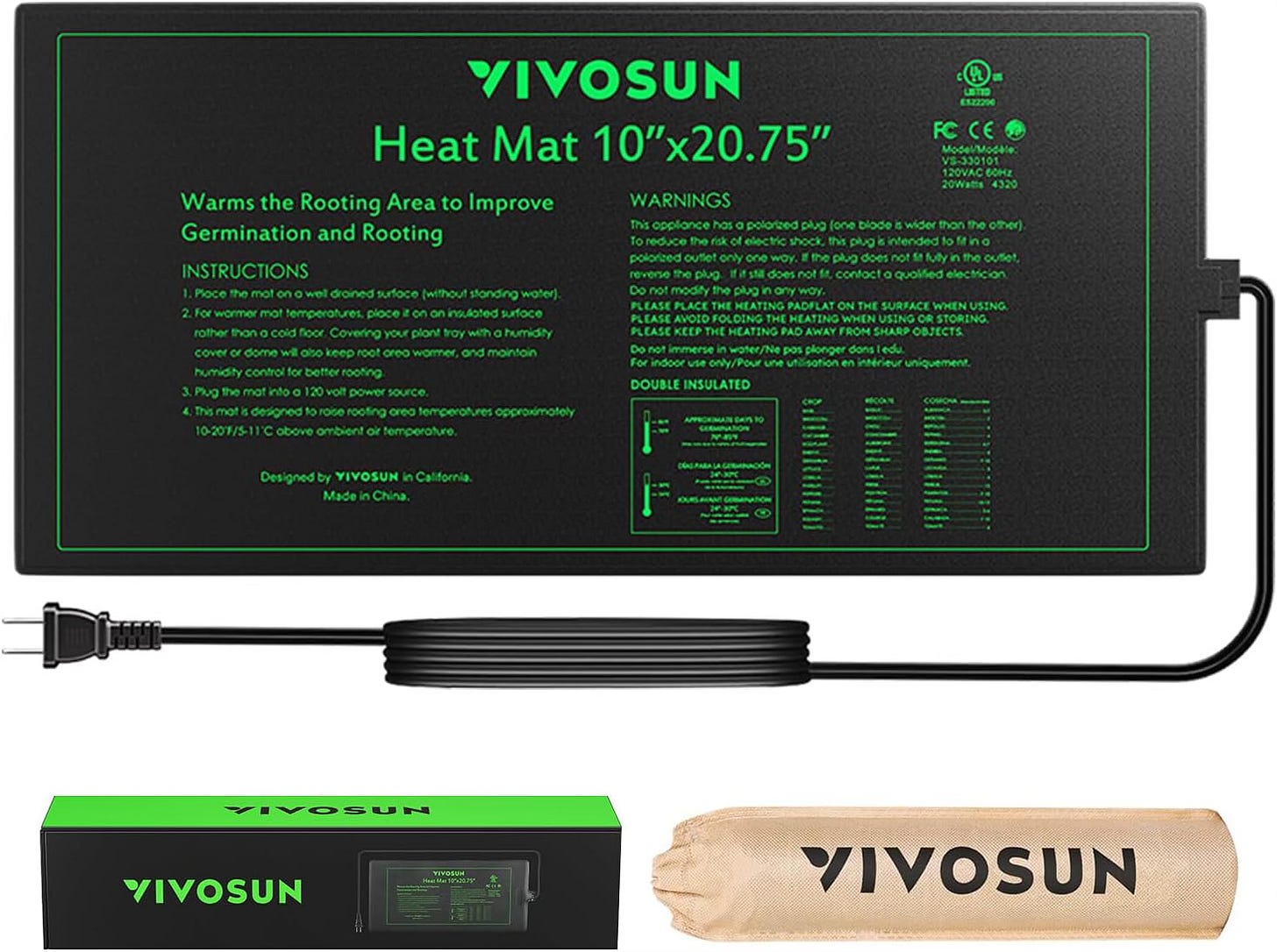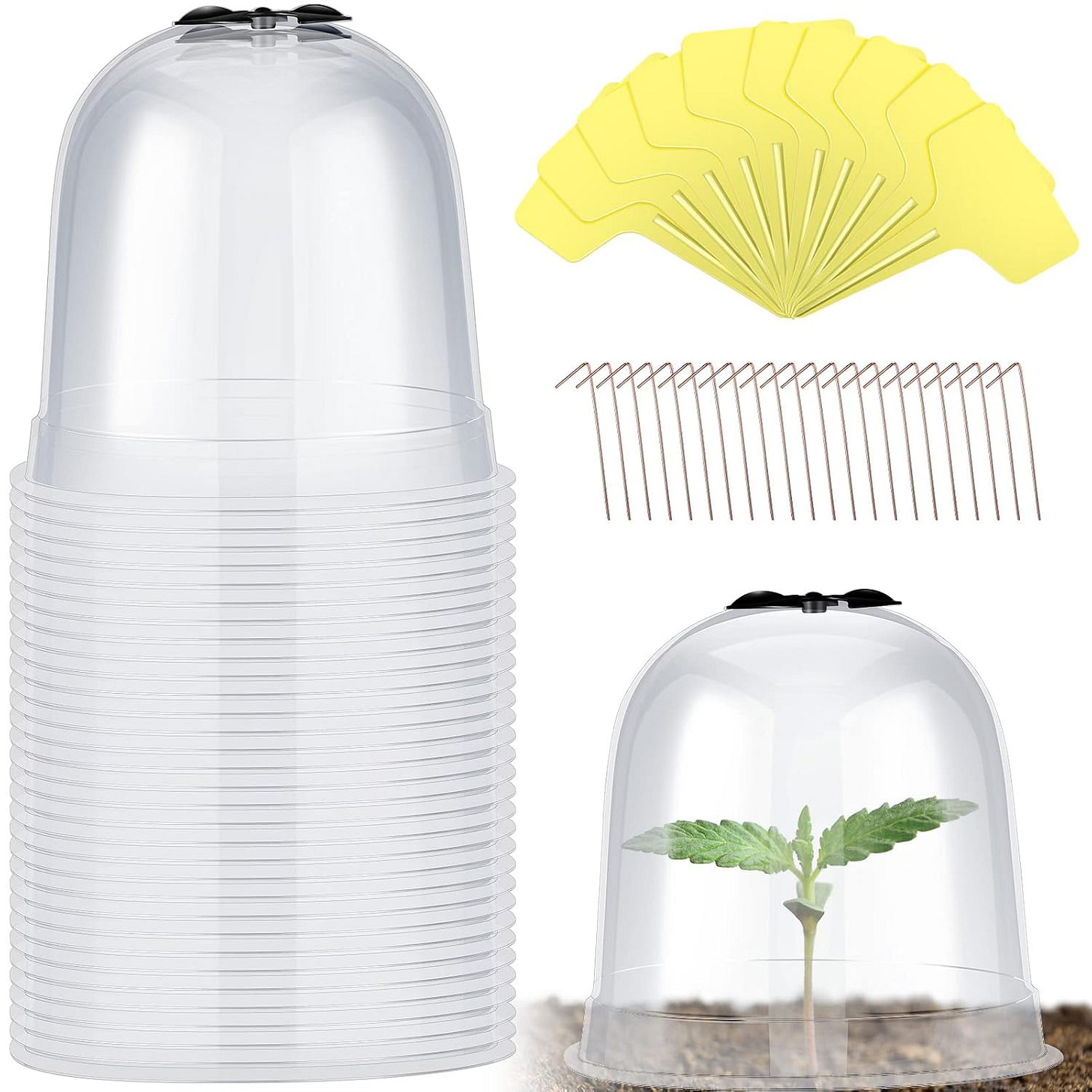What to Do 12 Weeks Before Your Last Frost Date: A Complete Gardening Guide
What to Do 12 Weeks Before Your Last Frost Date: A Complete Gardening Guide
As winter slowly loosens its grip, gardeners eagerly anticipate the start of the growing season. If you're 12 weeks away from your last frost date, now is the perfect time to start preparing for a thriving garden. Proper planning and early action will set the foundation for a successful growing season. Here's your comprehensive guide on what to do at this crucial stage.
The following contains affiliate links. Thank you clicking the links and supporting my family :)
1. Determine Your Last Frost Date
Before diving into garden preparations, it's essential to know your estimated last frost date. You can find this information through the USDA Plant Hardiness Zone Map or by checking with local gardening extensions. Your last frost date determines when it’s safe to transplant tender plants outdoors.
Mine is May 15th, in zone 6b
2. Start Planning Your Garden Layout
Now is the time to map out your garden space. Consider:
-
Crop placement: Rotate crops to prevent soil depletion and disease buildup.
-
Companion planting: Pair plants that benefit each other’s growth, such as tomatoes and basil.
-
Space utilization: Optimize your space with raised beds, trellises, or succession planting.
Use a gardening journal or digital planner to sketch out your garden and track important dates.
Or if you do not want to do any of that and want an easy plug and play garden I have made a Spring Gardening Guide just for that!!!! Honestly if this is your first garden I would start with the gardening guide. I made it so you do not need to Google a thing! All the information, tools, and seeds to buy are in one place.
3. Order Seeds and Supplies
If you haven’t already, order your seeds and gardening supplies to ensure availability. Consider purchasing:
-
Vegetable, herb, and flower seeds
-
Seed-starting trays and soil
-
Grow lights and heating mats
-
Organic fertilizers and soil amendments
-
Garden tools and containers
Opt for high-quality seeds from reputable sources to maximize germination rates and plant health.
4. Start Cold-Hardy Seeds Indoors
Certain vegetables need a head start indoors. At 12 weeks out, begin sowing seeds for:
-
Onions
-
Leeks
-
Celery
-
Artichokes
These plants have a long growing season and benefit from early indoor germination. Use seed-starting trays with well-draining soil and provide adequate light to promote strong seedlings.
5. Set Up Your Seed-Starting Station
To ensure healthy seedlings, create a dedicated seed-starting space with:
-
Grow lights: Keep lights on for 12-16 hours a day to prevent leggy seedlings.
-
Heating mats: Maintain soil temperatures around 65-75°F for optimal germination.
-
Proper ventilation: Use a fan to strengthen stems and prevent mold growth.
6. Test and Amend Garden Soil
Healthy soil is the key to a productive garden. Conduct a soil test to check for nutrient levels and pH balance. Based on the results, amend your soil with:
-
Compost for organic matter and microbial activity
-
Lime to raise pH or sulfur to lower pH
-
Organic fertilizers like bone meal, blood meal, or kelp meal
If the ground is frozen, plan to add amendments once the soil is workable. Currently mine is frozen and covered in snow so I will not be doing this yet.
7. Prepare Your Garden Beds
If the weather allows, start prepping your garden beds by:
-
Clearing debris from last season
-
Adding compost or aged manure
-
Mulching to retain moisture and suppress weeds
-
Building raised beds if needed
Avoid tilling too early, as wet soil can become compacted and difficult to work with later.
8. Check and Organize Your Tools
A well-maintained set of tools makes gardening easier. Take time to:
-
Clean and sharpen pruning shears, shovels, and hoes
-
Oil metal parts to prevent rust
-
Replace worn-out gloves, hoses, and other essentials
Having everything ready now saves time once planting season arrives.
9. Start a Compost Pile
If you don’t already have one, now is a great time to start composting. Gather organic materials like:
-
Fruit and vegetable scraps
-
Coffee grounds and eggshells
-
Leaves and grass clippings
-
Shredded newspaper and cardboard
Compost enriches soil naturally and reduces waste.
10. Plan for Pest and Disease Management
Preventative measures keep pests and diseases in check before they become a problem. Consider:
-
Crop rotation to prevent soil-borne diseases
-
Companion planting to repel pests
-
Floating row covers for early protection
-
Natural pest deterrents like neem oil and diatomaceous earth
11. Set Up Cold Frames or Greenhouses
Extend your growing season by setting up cold frames, greenhouses, or hoop houses. These structures:
-
Protect seedlings from harsh weather
-
Allow for earlier planting of hardy crops
-
Help acclimate transplants before moving them outdoors
12. Prune Perennial Plants
Late winter to early spring is an excellent time to prune many perennials, including:
-
Fruit trees (apples, pears, peaches)
-
Berry bushes (raspberries, blueberries)
-
Grapevines
Proper pruning encourages healthy growth and improves yield.
13. Prepare for Early Planting Outdoors
Some cold-hardy crops can be sown outdoors well before the last frost. Prepare to direct-seed:
-
Peas
-
Spinach
-
Kale
-
Radishes
Use row covers or cloches for added protection against late frosts.
(I am not doing this yet as my soil cannot be worked) What I will be doing is starting seeds in milk jugs. Milk jugs create a greenhouse effect. I will plant cold hardy plants in the milk jug, set outside and let them be. Nature will dictate when they sprout and once they have a few set of true leaves the ground should be workable to plant in the garden bed.
14. Join a Gardening Community
Connect with other gardeners through:
-
Online forums and social media groups
-
Local gardening clubs
-
Seed swaps and plant exchanges
Engaging with experienced gardeners provides valuable insights and inspiration.
Heyyyyy that is me!! Check out my instagram @houseonpennylane for a ton of gardening videos.
15. Stay Flexible and Enjoy the Process
Weather conditions can be unpredictable, so stay flexible with your gardening plans. Use this time to learn, experiment, and embrace the joy of gardening.
Final Thoughts
Taking these steps 12 weeks before your last frost date ensures a strong start to your gardening season. From seed-starting to soil preparation, every action you take now lays the groundwork for a successful and abundant harvest. Happy gardening!






